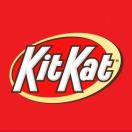
kitkiat
lucky day
11Follow
4Followers
0Topic
0Badge
i like green
Wall Street ends sharply higher, led by surging Dow
Good
U.S. 30-Year Yield Drops Below 2% For First Time Since February
Windows 11 gona be very exciting
Microsoft sent a strong signal to developers that could hurt Apple and Google
thanks for sharing. considering
Nike, FedEx, Johnson & Johnson, Darden, and Other Stocks for Investors to Watch This Week
like
Fed holds rates steady, but raises inflation expectations sharply and makes no mention of taper.
[Strong]
Answering the great inflation question of our time
good opportunity!
Stocks making the biggest moves after hours: Beyond Meat, KB Home, Steelcase and more
Time to go in and park for the takeoff!
Alibaba: Can BABA Get Back To $300? Yes, It Can
go green go
Tech leads way to Wall Street rebound as Powell promises steady hand
Have a nice day
lucky lucky
Sorry, the original content has been removed
buy
Sorry, the original content has been removed
Go to Tiger App to see more news